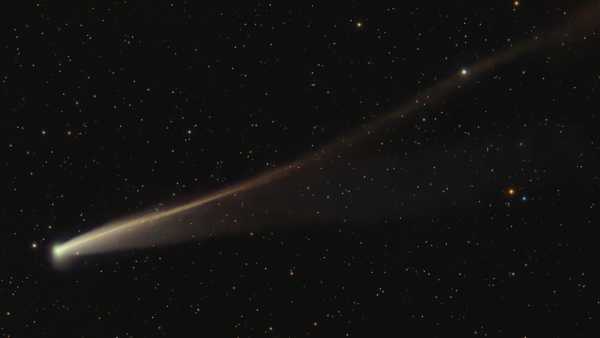
A 146-gram fragment of the Aguas Zarcas meteorite. (Photo credit: Arizona State University/SETI Institute.)
The meteorite debris that landed in Costa Rica in 2019 is so unusual that scientists believe it traveled through space virtually unscathed — until it hit Earth, that is. That's in stark contrast to most meteorites, which show signs of multiple impacts before reaching our planet.
The meteorites were found near the town of Aguas Zarcas in Costa Rica and belong to a category of meteorites known as “mudballs” because they contain water-rich minerals.
The findings have led to a rethinking of the characteristics of these so-called mud meteorites. It was thought that their high content of water-rich minerals made them weaker than other types of meteorites, making them more susceptible to damage or combustion. However, “Clearly [the presence of water-rich minerals] … does not indicate weakness,” said Peter Jenniskens, an astronomer and meteoriticist at the SETI Institute and NASA’s Ames Research Center in California.
Researchers say the discovery rivals one of the most significant meteorite discoveries in the past 50 years. “27 kilograms [60 pounds] of rock were recovered, making it the largest such fall since similar meteorites fell near Murchison, Australia, in 1969,” Jenniskens said.
The Murchison meteorite impact occurred just two months after the Apollo 11 mission. The recovered samples showed that they had been exposed to liquid water on their parent body before the impact tore it apart and sent the Murchison and then Aguas Zarcas meteorites into space. (Meteoroids are the terms we use to refer to meteorites when they are in outer space.)
Camera footage captured the 2019 dirt meteor entering the atmosphere from a west-northwest direction over Costa Rica at a steep, nearly vertical angle of 81 degrees and traveling at 9 miles (14.6 kilometers) per second. This steep angle allowed the meteor to pass through less of the atmospheric layer than if it had been traveling at a shallower angle. This means that more of the original meteoroid was able to make it through the fiery path across the sky over Costa Rica.
“Based on the trajectory of the approaching meteorite, we can conclude that this object came from a larger asteroid located in the lower part of the asteroid belt, probably from its outer regions,” Jenniskens added.
When it entered Earth's atmosphere, the rocky body was estimated to have been about 23.6 inches (60 cm) in diameter. Friction from the atmosphere created heat that melted its surface, removing much of the rock in a process known as ablation as it began to burn up.
“It penetrated deep into the Earth's atmosphere until the surviving mass disintegrated 15.5 miles (25 kilometers) above the ground, causing a bright flash that was detected by satellites in orbit,” Jenniskens said.
These satellites included the Geostationary Environmental Satellites (GOES) 16 and 17 and their lightning detectors, which are Earth observing satellites used by NASA and the National Oceanic and Atmospheric Administration (NOAA).
The debris was scattered across the soft soil of the Costa Rican jungle and grasslands, where it was later found by meteorite hunters and volunteers. However, the meteorites had a somewhat unusual appearance.
“The Aguas Zarcas fall produced an amazing assortment of fusion-crusted rocks with a variety of shapes,” said meteorologist Lawrence Garvey of the Busek Meteorite Center at Arizona State University. “Some of the rocks have amazing
Sourse: www.livescience.com





